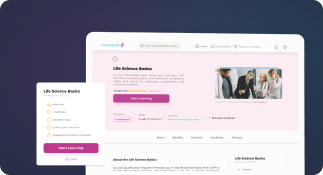Sampling Plan in GMP (Good Manufacturing Practice)
Definition
A Sampling Plan is a documented strategy within a quality management system that outlines the method, quantity, frequency, and location of sampling materials, components, or products for testing and verification. It is a critical element in pharmaceutical and life sciences manufacturing, ensuring compliance with Good Manufacturing Practice (GMP) and regulatory standards.
Sampling plans are designed to provide representative data for quality assurance (QA), allowing manufacturers to make informed decisions about the acceptance or rejection of materials or products.
Detailed Explanation
Purpose and Importance of a Sampling Plan
In GMP-regulated industries, such as pharmaceuticals, biotechnology, and medical devices, a robust sampling plan ensures that quality control activities are scientifically justified and statistically valid. The primary goals of a sampling plan include:
- Ensuring product quality and consistency
- Meeting regulatory compliance (e.g., FDA, EMA, ICH guidelines)
- Minimizing the risk of batch rejection or product recall
- Supporting continuous improvement and risk management
Key Components of a Sampling Plan
A compliant sampling plan typically includes the following elements:
- Sampling Method: The technique used to collect a representative sample (e.g., random, stratified, composite sampling)
- Sample Size: The number of units or quantity of material to be tested, often determined using statistical models such as ANSI/ASQ Z1.4 or ISO 2859
- Sampling Frequency: How often samples are taken (e.g., per batch, per shift, daily)
- Sampling Location: Where the sample is taken from (e.g., top, middle, bottom of a container or batch)
- Acceptance Criteria: The predefined limits or specifications for determining pass/fail status
- Justification and Rationale: Scientific or risk-based reasoning behind the chosen sampling strategy
Types of Sampling Methods
Several sampling methods are used depending on the material type, process, and regulatory requirements:
- Random Sampling: Every unit has an equal chance of being selected; reduces bias.
- Stratified Sampling: Divides the lot into subgroups and samples are taken from each to ensure representation.
- Composite Sampling: Combines multiple samples into one for testing, reducing costs but limiting individual traceability.
- Judgmental Sampling: Based on the sampler’s expertise, often used in investigations or non-routine testing.
Applications in Quality Assurance (QA Sampling)
QA sampling is a subset of the sampling plan focused on verifying that materials and products meet quality standards. Examples include:
- Raw Material Sampling: Ensuring identity and purity before use in manufacturing
- In-Process Sampling: Monitoring critical quality attributes (CQAs) during production
- Finished Product Sampling: Confirming final product compliance with specifications
- Environmental Sampling: Assessing cleanliness of manufacturing areas (e.g., air, surfaces)
Regulatory Expectations and Compliance
Regulatory agencies such as the FDA, EMA, and ICH require documented and scientifically justified sampling plans. Key documents include:
- ICH Q7: GMP for Active Pharmaceutical Ingredients
- ICH Q9: Quality Risk Management
- 21 CFR Part 211: Current Good Manufacturing Practice for Finished Pharmaceuticals
Failure to implement an adequate sampling plan can result in regulatory citations, product recalls, or enforcement actions.
Example Scenario
In a tablet manufacturing facility, a sampling plan may specify that 10 units be randomly sampled from each batch of 10,000 tablets. The sampling method (random), location (from different parts of the batch), and acceptance criteria (e.g., assay between 95–105%) are defined in the standard operating procedure (SOP). These samples are tested for potency, dissolution, and microbial limits to ensure batch release compliance.



